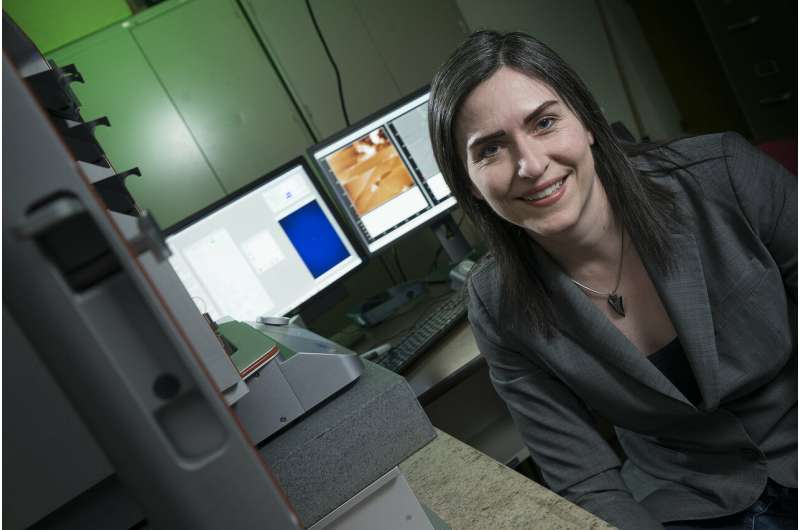Animal, plant biology aids in improving electronic and energy conversion devices, Purdue discovers

Inspired by the unique structural elements of animal and plant biological cell membranes, Purdue University researchers have scaled up the production of nanoscale electronics by replicating the living molecular precision and "growing" a circuit of solar cells for use on electronic surfaces.
The technology could address some of the greatest challenges in the production of nanoscale electronic and optoelectronic devices: scaling up to meet production demand of better, faster phones, computers and other electronic devices.
In cellular membranes, molecules with distinctive heads and tails stand together, tightly packed, like commuters in a subway at rush hour. For the most part, only the heads of the molecules are exposed to the environment around the cell, where they control interactions with other cells and with the world at large.
"Biology has developed a phenomenal set of building blocks for embedding chemical information in a surface," said Shelley Claridge, an assistant professor of chemistry and biomedical engineering at Purdue, who leads the group. "We hope to translate what we have learned from biological design to address current scaling challenges in industrial fabrication of nanoscale electronic and optoelectronic devices."
One of those scaling challenges relates to controlling surface structure at scales below 10 nanometers—a need common to modern devices for computing and energy conversion.
Claridge's research group has found that it is possible to design surfaces in which phospholipids sit, rather than stand on the surface, exposing both heads and tails of each molecule. Because the cell membrane is remarkably thin, just a few atoms across, this creates striped chemical patterns with scales between 5 and 10 nm, a scale very relevant to device design.
One unique discovery by the team reveals that these striped, 'sitting' monolayers of phospholipids influence the shape and alignment of liquid nanodroplets placed on the surfaces. Such directional wetting at the molecular scale can localize solution-phase interactions with 2-D materials, potentially facilitating deposition of constituents for graphene-based devices.
Provided by Purdue University



















